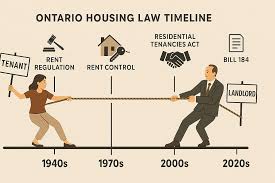The concept of intergenerational or multigenerational homes – where two or more generations of a family live under one roof, or at least within one property – is gaining significant traction in Canada, and for very good reason. Data from Statistics Canada reveals that in 2021 there were 441,750 multigenerational households in Canada (defined as households with three or more generations) and a total of about 9.5 million Canadians living in inter- or multigenerational setups. Vanier Institute of the Family+3Kelowna Real Estate+3Advisor.ca+3 That translates into about 2.9 % of private households being multigenerational — up from 2.7 % in 2016 — and a rise of about 21 % since 2001. Statistics Canada+1 Moreover, construction and real-estate professionals note a growing demand for homes designed explicitly for intergenerational living — secondary suites, laneway homes, homes with dual living units, etc. Mortgage Professional Australia+1
This growing popularity is especially visible in Canadian cities with high housing costs and diverse populations. For example:
-
In Brampton (Ontario) about 14.3 % of households were multigenerational in 2021 — the highest among Canadian cities surveyed. Statistics Canada+1
-
In Surrey (British Columbia) and Markham (Ontario) the figures are roughly 9.6 % and 9.5 % respectively. Statistics Canada+1
-
In more expensive housing markets such as Toronto and Vancouver, the pressure of housing affordability is cited as a major driver behind families choosing shared-living arrangements. Statistics Canada+1
Advantages for parents
For the older generation (the parents or grandparents) sharing a home with younger family members offers several compelling benefits:
-
Security, support and reduced isolation: Aging parents often worry about isolation, mobility, or needing support. Living close to children/grandchildren helps them stay socially connected, have assistance nearby, and benefit from the day-to-day family rhythm. The Vanier Institute notes that caregiving and social connectivity are important motivators. Vanier Institute of the Family+1
-
Cost savings / use of existing property: Instead of downsizing or moving into a retirement residence, staying in the family home and sharing expenses (utilities, property taxes, etc) can allow seniors to maintain independence while leveraging their home’s value. Some governments now offer programs or tax credits aimed at intergenerational homes or secondary suites. National Bank+1
-
Legacy and purpose: Being integrated into a younger family’s daily life gives many older folks a renewed sense of purpose — childcare roles, mentoring grandchildren, being part of household rhythms — which can enhance wellbeing.
-
Housing wealth & asset transfer: According to a recent study by Statistics Canada, around 17.3 % of residential properties owned by people born in the 1990s were co-owned with parents in 2021, especially in high-value markets like Toronto, Vancouver and Kelowna. Statistics Canada+1 This suggests parents are leveraging their housing wealth to facilitate co-ownership or shared living arrangements.
Advantages for children
For the adult children (and their own children) co-residing with their parents or grandparents, the benefits are equally strong:
-
Affordability boost: With housing prices high and interest rates elevated, sharing a home with parents or grandparents, or buying together, reduces the burden of solo home-ownership or renting. Data shows multigenerational households have a much lower incidence of low-income status: only ~4.3 % live in low-income compared to much higher rates in one-person households. Statistics Canada+1
-
Child-care and household help: Having grandparents living in the same home (or very nearby) provides free or low-cost childcare, and helps with everyday logistics — cooking, errands, babysitting — giving working parents more flexibility. Vanier Institute of the Family
-
Strengthened family bonds and cultural transmission: For many families — especially newcomers or those with immigrant backgrounds — intergenerational living supports cultural continuity, language, and values. The statistics show that a higher proportion of multigenerational households include immigrants or racialized groups. Advisor.ca+1
-
Better home choice / flexibility: Instead of renting a smaller space, children may move into a shared home with a separate suite, or the family may buy a place with a secondary unit or laneway house. This gives more space and independence while still enjoying shared benefits. Real estate blogs note a surge in purpose-built multigenerational properties. Mortgage Professional Australia
Conclusion
In short, the growing popularity of intergenerational homes in Canada reflects both economic realities (rising housing costs, aging population) and evolving social-family dynamics (caregiving, cultural preferences, asset sharing). Cities like Brampton, Surrey and Markham are showing above-average rates of such households. For parents and grandparents, the benefits are social connection, support, cost-efficiency and legacy; for children and younger generations, the benefits are affordability, support with childcare/household tasks, cultural and emotional richness, and flexible living arrangements.
Search
Categories
Recent posts
Tags
- a louer
- affordable apartments Toronto
- affordable housing
- affordable housing solutions Canada
- Air Filters
- air quality
- apartment
- apartment close to public transport
- apartment for rent
- apartment for rent montreal
- apartment for rent Toronto
- apartment insurance
- appartement
- appliances
- ARTICLE
- available for rent
- background check
- bacteria
- best city to live in canada
- best healthcare
- bicycle
- bicycle path
- bike lane
- bike path
- bikes
- bill 16
- burglar
- buy a house
- buying a house
- carbon monoxide detector
- cars
- centris
- city
- cleaning
- cleaning products
- cleaning wood floors
- closet
- closet space
- clothing organizer
- compact rental units
- condo
- condo association laws
- condo fees
- condo for rent
- condo insurance
- construction budget
- construction contractors
- construction cost
- credit check
- decorating room
- digital transaction
- door lock
- doors
- downtown micro apartments
- electricity
- employment verification
- energy consumption
- energy cost
- energy saving
- engineered hardwood
- fire alarm
- fire detector
- fire extinguisher
- floor
- flooring
- for rent
- For rent in Montreal
- For rent in Toronto
- For rent in Vancouver
- for sale
- furniture
- gas
- healthy candles
- healthy lifestyle
- home
- house
- house for rent
- house for sale
- house garden
- house insurance
- house locks
- house plants
- immigrant
- importance of water leak detector
- indoor plants
- insurance
- intergenerational home
- intergenerational living
- interior designer
- investment
- landlord
- lease
- lease responsibility
- long term care facility
- low crime
- mattress
- micro-apartments Vancouver
- micro-units Toronto
- mls
- move to canada
- moving company
- Moving to canada
- moving truck
- multigenerational home
- multiplex
- nano-suites
- nano-suites Toronto
- new apartment
- new color
- oil
- old age home
- online house purchase
- Ontario
- paint colors
- passive income
- pet friendly apartment
- pet friendly plants
- planning for vacation
- plants
- porcelain tile
- property
- questions for apartment rental
- real estate
- real estate agent
- real estate broker
- real estate online
- real estate transaction
- realtor
- renal history
- rent
- rent an apartment
- rent control
- rent obligations
- rental
- rental board
- rental scam
- renting
- residential income
- residential lease
- residential rental
- revenue property
- safe area
- safe candle in apartment
- safe candle in house
- safe candles
- safety
- scam
- security
- sell a house
- seniors residence
- small apartments Vancouver
- smoke detector
- social media and real estate
- soy candle
- soy candles made with essential oils
- storage space
- student apartment
- student housing
- tenant
- tiny rentals Canada
- traffic
- trending color
- trending paint
- university student rental
- ventilation
- vinyl floor
- water alarm
- water damage
- water leak detector
- window frame
- window manufacturer
- windows
- wood floors



